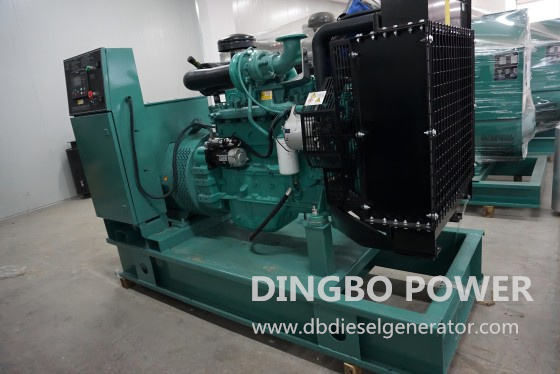Bringing along a generator when you go camping in the wild enables you to enjoy a more comfortable and convenient camping trip. But you need to transport the generator safely before you can use it. In this article, you’ll find several tips on how to transport a diesel generator securely to the desired location.
Make good preparations for transporting generator
Before you move your diesel generator, make sure everything is ready. Below are a few necessary preparations:
Check your manufacturer’s manual recommendations
Keep in mind that each generator is different, it's essential to check your owner’s manual before moving the diesel generator. Follow the procedures and operations for safety and maintenance in the manual of your given generator model. Pay attention to any unique tasks that you may need to perform.
Make sure the fuel valve is closed
This step is important, because fuel could get into the crankcase and dilute the engine oil during transport if the fuel valve is not closed. Please be noted that it’s best to position the fuel valve switch to OFF when the engine is not running.
Ensure your generator has cooled completely before transport
If your generator is used recently, DO NOT transport it immediately. Please wait 15~ 20 minutes for the generator to cool down to prevent burns and damage to generator components.

Things you need to know when transporting diesel generator
When transporting the generator, you need to follow the instructions below carefully:
Use the handholds
When carrying smaller diesel generators, take advantage of any handles provided. If your machine is equipped with fold-out handles, skids or wheels, you can use them to push your generator into place.
Keep the generator upright
You can carry the generator on top of your car, placed on a skid or pallet, secured on the back of a truck, or mounted on a trailer or other specialized vehicles. Please always keep the generator upright. If the generator tilts or is transported on its side, fuel may leak and cause damage to the generator.
Protect and secure the generator
Bouncing or bumping during transport could damage the generator assembly. Thus, you need to lock the wheels and firmly secure your generator to the truck bed or trailer or other transport vehicles with bungee cords or tie-down straps. Cover your generator with a tarp, and insulate the control panels and ports for additional protection.
In addition, avoid placing something on top of the generator and DO NOT place the generator on top of anything else. Maintaining a constant speed while driving and leaving plenty of space between yourself and other drivers can reduce the chance of slamming on the brakes and prevent the generator from falling over.
Tips to transport fuel
Your diesel generator set needs to run on fuel to generate electrical power, so make sure your fuel gets to the desired location is half the battle of transporting your generator. Fuel sources of diesel generator sets are all potentially volatile liquids such as diesel and gasoline, you need to handle these with care. Make sure the fuel tank cap is tight during transportation. Securing the fuel tank cap and any vents in it. Place the fuel can in the truck bed or car trunk. Do not keep it in the passenger compartment, as even an empty container will leak remaining vapors. Bear in mind that don't leave fuel in the car for too long to prevent potential risks and always remove the fuel container immediately after use. Regulations regarding fuel transportation and storage must be followed.
To safely transport your diesel generator set, there are some additional tips for you:
Plan your route ahead of time and consider any weight limits, road restrictions, safety regulations and other factors that may affect generator transportation.
Consider the weather conditions and avoid transporting the generator in bad weather such as strong winds, heavy rain or snow.
Consider the destination site’s accessibility, including road conditions, terrain, and available space before transporting your diesel generator.
Ask a friend or a professional mover for help if you can’t move the machine by yourself.
Hope the tips mentioned above are helpful for you to transport your diesel generator. If you are still looking for any further information or assistance regarding to generator transportation, contact Dingbo Power today. We are a leading provider of diesel generators in a number of sizes and capabilities from China. Dingbo Power caters to diverse power needs.
Comments
Post a Comment